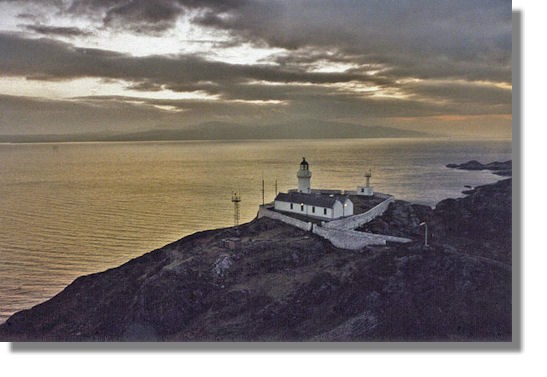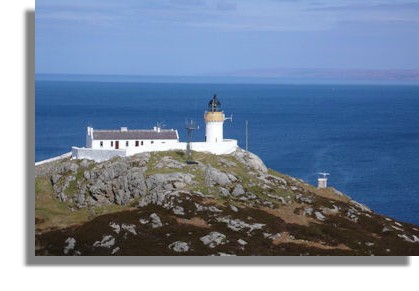

Lighthouse Beacons from Scotland
Rona Lighthouse

Photo by wfmillar via Wikimedia

Rona (Scottish Gaelic: Ṛnaigh) is sometimes called South Rona to distinguish it from North Rona, is a small island in the Scottish Inner Hebrides. It lies between the Sound of Raasay and the Inner Sound just north of the neighbouring island of Raasay and east of the Trotternish peninsula of Skye. It has a total area of 3.6 square miles. On the west side of the island is a secure and picturesque natural anchorage. The writer Malcolm Slesser described it as "a delightful little fjord, and superb harbour for small boats. Pink felspar cliffs drop steeply into the water, and small lush woodland lends a touch of luxury." Rona's name is believed to be of Old Norse origin, from Hraun-ey meaning "rough island" and probably reflects a Viking settlement. (Graphic on the right is by Calum McRoberts via Wikimedia).
In 1853 the Commissioners' Engineer David Stevenson, who had succeeded his brother Alan in February, prepared a list of 45 possible sites thought desirable to complete a system of lights for the coasts of Scotland. The board named eight which ought to be given priority - Sound of Islay (at or near Port Askaig), Sound of Mull (at or near Tobermory), the north and south entrances to the sounds between Skye and the mainland (Rona and Ornsay), the coast of Sutherland (at or near Stoer Head or Rubh' Re), Holburn Head near Thurso, Cantick Head or Switha in Orkney, and Bressay at the south entrance to Lerwick harbour. A widow named Janet Mackenzie had for many years shown a light in one of her windows on Rona which enabled fishing boats to clear the rocks at the harbour entrance, and she had been given a grant of £20 by the Northern Light Commissioners. (Graphic on the left is by Calum McRoberts via Wikimedia).
Rubha na Gall (Sound of Mull), Ornsay, Kyleakin, Rona and Ushenish lighthouses were all lighted on 10 November 1857.
In 1922 the islands of Rona and Raasay were acquired from their private landlord by the British Government. After this, the population of Rona fell sharply, as most of the island's inhabitants moved to settle on Raasay. In 1943 the last crofting family left and the island had become uninhabited, with the exception of the lighthouse keepers who lived at its north end until the lighthouse was automated in 1975.
Return to Index of Lighthouse Beacons from Scotland



